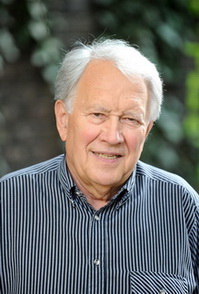

Head of the Laboratory:
Dr. Árpád Dobolyi, PhD, DSc, research professor
Scientific Advisor:
Dr. Miklós Palkovits, MD, PhD, DSc, professor, member of the Hungarian Academy of Sciences
Members of the Laboratory:
• János Barna, PhD, associate professor
• Fanni Dóra, PhD, postdoctoral fellow
• Tamás Láng, MD-PhD fellow
• Tamara Hajdu, PhD fellow
• Nikolett Hanák, research assistant
Techniques and methods used routinely in the Laboratory
- Animal operations
- Occlusion of the middle cerebral artery and other models of focal brain ischemia
- Canulations, sampling of blood and cerebrospinal fluid in rodents
- Behavioral tests of anxiety, depression and maternal motivation
- Stereotaxic operations, brain lesions, pathway transections, tracer injections
- Neuronal tract-tracing using viruses and transgenic mice
- Laser capture microdissection and real-time RT-PCR
- Basic molecular biological techniques
- RNA amplification for sequencing
- In situ hybridization histochemistry and dark-field microscopy
- Immunolabeling and fluorescent microscopy
- Western blotting
- Fiber photometry
- Analysis of single cell RNA sequencing
- Chemo- and optogenetics
- Behavioural analysis, cameras, automated video analysis systems
Ongoing research activity in the Laboratory
1. Parenting behavior
- (2025) Maternally activated connections of the ventral lateral septum reveal input from the posterior intralaminar thalamus. Brain Struct. Funct. 230:27.
- Puska G., Szendi V., Dobolyi A. (2024) Lateral septum as a possible regulatory center of maternal behaviors. Neurosci. Biobehav. Rev. 161:105683.
- Kumari R., Fazekas E.A., Morvai B., Udvari E.B., Dóra F., Zachar G., Székely T., Pogány Á., Dobolyi Á. (2022) Transcriptomics of parental care in the hypothalamic-septal region of female zebra finch brain. Int. J. Mol. Sci. 23:2518.
- Tóth A., Pethő M., Keserű D., Simon D., Hajnik T., Détári L., Dobolyi A. (2020) Complete sleep and local field potential analysis regarding estrus cycle, pregnancy, postpartum and post-weaning periods and homeostatic sleep regulation in female rats. Sci. Rep. 10:8546.
- Dobolyi A., Lékó A.H. (2019) The insulin-like growth factor-1 system in the adult mammalian brain and its implications in central maternal adaptations. Front. Neuroendocrinol. 52:181-194.
- Cservenák M., Szabó É.R., Bodnár I., Lékó A., Palkovits M., Nagy G.M., Usdin T.B., Dobolyi A. (2013) The thalamic neuropeptide TIP39 mediates the effects of nursing on lactation and maternal motivation. Psychoneuroendocrinology 38:3070-3084.
- Szabó E.R., Cservenák M., Dobolyi A. (2012) Amylin is a novel neuropeptide with potential maternal functions. FASEB J. 26:272-281.
2. ProlaCtin
- (2025) Prolactin in sleep and EEG regulation: new mechanisms and sleep-related brain targets complement classical data. Neurosci. Biobehav. Rev. 169:106000.
- Tóth A., Keserű D., Pethő M., Détári L., Bencsik N., Dobolyi A., Hajnik T. (2024) Sleep and local field potential effect of the D2 receptor agonist bromocriptine during the estrous cycle and postpartum period in female rats. Pharmacol. Biochem. Behav. 239:173754.
- Csikós V., Oláh S., Dóra F., Arrasz N., Cservenák M., Dobolyi A. (2023) Microglia depletion prevents lactation by inhibition of prolactin secretion. iScience 26:106264.
- Dobolyi A., Oláh S., Keller D., Kumari R., Fazekas E.A., Csikós V., Renner É., Cservenák M. (2020) Secretion and function of pituitary prolactin in evolutionary perspective. Front. Neurosci. 14:621.
- Olah S., Cservenák M., Keller D., Fazekas E.A., Renner E., Low P., Dobolyi A. (2018) Prolactin-induced and neuronal activation in the brain of mother mice. Brain Struct. Funct. 223:3229-3250.
3. Brain pathology of stroke
- Pénzes M., Túrós D., Máthé D., Szigeti K., Hegedűs N., Rauscher A.Á., Tóth P., Ivic I., Padmanabhan P., Pál G., Dobolyi Á., Gyimesi M., Málnási-Csizmadia A. (2020) Direct myosin-2 inhibition enhances cerebral perfusion resulting in functional improvement after ischemic stroke. Theranostics. 10:5341-5356.
- Völgyi K., Gulyássy P., Todorov M.I., Puska G., Badics K., Hlatky D., Kékesi K.A., Nyitrai G., Czurkó A., Drahos L., Dobolyi A. (2018) Chronic cerebral hypoperfusion induced synaptic proteome changes in the rat cerebral cortex. Mol. Neurobiol. 55:4253-4266.
- Pál G., Vincze C., Renner É., Wappler E.A., Nagy Z., Lovas G., Dobolyi A. (2012) Time course, distribution and cell types of induction of transforming growth factor betas following middle cerebral artery occlusion in the rat brain. PLoS One 7:e46731.
- Dobolyi A., Vincze C., Pál G., Lovas G. (2012) The neuroprotective functions of transforming growth factor beta proteins. Int. J. Mol. Sci. 13:8219-8258.
4. Pathomechanism of epilepsy
- Koech P.K., Jócsák G., Boldizsár I., Moldován K., Borbély S., Világi I., Dobolyi A., Varró P. (2023) Anti-gluatamatergic effects of three lignin compounds: arctigenin, matairesinol and trachelogenin – An ex vivo study on rat brain slices. Planta Med. 89:879-889.
- Kovács Z. (2018) Uric acid and allopurinol aggravate absence epileptic activity in Wistar Albino Glaxo Rijswijk rats. Brain Res. 1686:1-9.
- Kovács Z., Lakatos R.K., Barna J., Dobolyi A. (2017) Absence epileptic activity in Wistar Albino Glaxo Rijswijk rat mothers. Brain Res. 1657:368-376.
- Lakatos R.K., Dobolyi A., Todorov M.I., Kékesi K.A., Juhász G., Aleksza M., Kovács Z. (2016) Guanosine may increase absence epileptic activity by means of A2A adenosine receptors in Wistar Albino Glaxo Rijswijk rats. Brain Res. Bull. 124:172-181.
5. Pathomechanism of depression
- Dóra F., Renner É., Keller D., Palkovits M., Dobolyi Á. (2022) Transcriptome profiling of the dorsomedial prefrontal cortex in suicide victims. Int. J. Mol. Sci. 23:2518.
- Dimén D., Puska G., Szendi V., Sipos E., Zelena D., Dobolyi A. (2021) Sex-specific parenting and depression evoked by preoptic inhibitory neurons. iScience 24:103090.
6. Neurochemistry of mitochondria
- (2024) Reverse phase protein array-based investigation of mitochondrial genes reveals alteration of glutaminolysis in the parahippocampal cortex of people who died by suicide. Transl. Psychiatry 14:479.
- Dobolyi A., Cservenák M., Bagó A.G., Chen C., Stepanova A., Paal K., Lee J., Palkovits M., Hudson G., Chinopoulos C. (2024) Cell-specific expression of key mitochondrial enzymes limits OXPHOS in astrocytes of the adult human neocortex and hippocampal formation. Commun. Biol. 7:1045.
- Dobolyi A., Bago A., Palkovits M., Nemeria N.S., Jordan F., Doczi J., Ambrus A., Adam-Vizi V., Chinopoulos C. (2020) Exclusive neuronal detection of KGDHC-specific subunits in the adult human brain cortex despite pancellular protein lysine succinylation. Brain Struct. Funct. 225:639-667.
- Barna J., Dimén D., Puska G., Kovács D., Csikós V., Oláh S., Udvari E.B., Pál G., Dobolyi A. (2019) Complement component 1q subcomponent binding protein in the brain of the rat. Sci. Rep. 9:4597.
7. Neuronal control of food intake
- Renner É., Dóra F., Oszwald E., Dobolyi Á., Palkovits M. (2022) Elevated glucagon-like peptide-1 receptor level in the paraventricular hypothalamic nucleus of type 2 diabetes mellitus patients. Int. J. Mol. Sci. 23:15945.
- Csikós V., Varró P., Bódi V., Oláh S., Világi I., Dobolyi A. (2020) The mycotoxin Deoxynivalenol activates GABAergic neurons in the reward system and inhibits feeding and maternal behaviours. Arch. Toxicol. 94:3297-3313.
- Barna J., Renner E., Arszovszki A., Cservenák M., Kovács Z., Palkovits M., Dobolyi A. (2018) Suckling induced activation pattern in the brain of rat pups. Nutr. Neurosci. 21:317-327.
- Renner E., Puskás N., Dobolyi A., Palkovits M. (2012) Glucagon-like peptide-1 of brainstem origin activates dorsomedial hypothalamic neurons in satiated rats. Peptides 35:14-22.
8. Social behaviour
- Láng T., Dimén D., Oláh S., Puska G., Dobolyi A. (2024) Medial preoptic circuits governing instinctive social behaviors. iScience 27:110296.
- Csikós V., Dóra F., Láng T., Darai L., Szendi V., Tóth A., Cservenák M., Dobolyi A. (2024) Social isolation induces changes in the monoaminergic signalling in the rat medial prefrontal cortex. Cells 13:1043.
- Fazekas C.L., Török B., Correia P., Chaves T., Bellardie M., Sipos E., Horváth H.R., Gaszner B., Dóra F., Dobolyi Á., Zelena D. (2024) The role of vesicular glutamate transporter type 3 in social behavior, with focus ont he median raphe region. eNeuro 11:ENEURO.0332-23.2024.
- Chaves T., Török B., Fazekas C.L., Correia P., Sipos E., Várkonyi D., Tóth Z.E., Dóra F., Dobolyi A., Zelena D. (2024) The dopaminergic cells in the median raphe region regulate social behavior in male mice. Int. J. Mol. Sci. 25:4315.
- Keller D., Lang T., Cservenák M., Puska G., Barna J., Csillag V., Farkas I., Zelena D., Dóra F., Küppers S., Barteczko L., Usdin T.B., Palkovits M., Hasan M.T., Grinevich V., Dobolyi A. (2022) A thalamo-preoptic pathway promotes social grooming in rodents. Curr. Biol. 32:4593-4606.
- Cservenák M., Keller D., Kis V., Fazekas E.A., Öllös H., Lékó A., Szabó É.R., Renner É., Usdin T.B., Palkovits M., Dobolyi A. (2017) A thalamo-hypothalamic pathway that activates oxytocin neurons in social contexts in female rats. Endocrinology 158:335-348.
9. theory OF Behaviour
- Integrating the COM-B model into behavioral neuroscience: A framework for understanding animal behavior. 138:111346.
- Yang M., Keller D., Dobolyi A., Valtcheva S. (2025) The lateral thalamus: a bridge between multisensory processing and naturalistic behaviors. Trends Neurosci. 48:33-46.